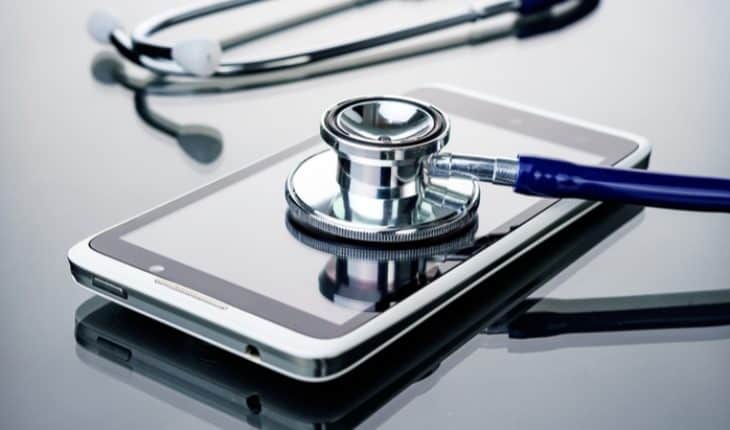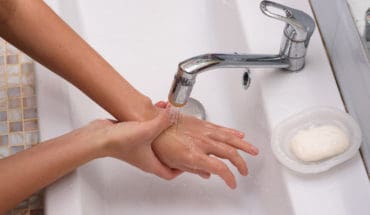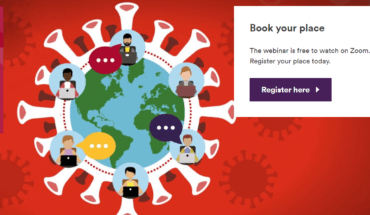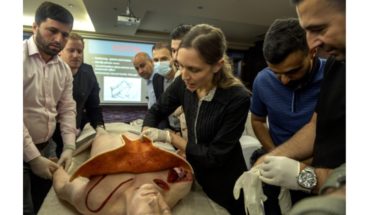A new Imperial-led review has outlined how health workers could use existing phones to predict and curb the spread of infectious diseases.
The review, published in Nature, outlines how healthcare workers in low-income countries, like those in sub-Saharan Africa, could use existing smartphones to diagnose, track and control infectious diseases in
low-income countries.
There are already initiatives focused on using established mobile technologies like text messages and calls to connect healthcare workers and patients to each other, and to test results.
This new review by researchers from Imperial, Karolinska Institute, UCL, University of KwaZulu-Natal, Africa Health Research Institute, and the London School of Hygiene and Tropical Medicine, says that smartphones could also help enable people to test themselves, and get results and support in their own homes. This would make it easier for people to look after their own health – particularly in rural regions, where clinics can be too far away to travel.
In addition, patients worried about a potential HIV infection might be more inclined to get tested if they could do it at home and avoid the stigma of attending a clinic.
Many smartphones have sensors built in that could aid diagnosis, such as a heart rate monitor and an oximeter, as well as a camera and microphone that can be used to analyse images and sounds like a person’s breathing.
In addition, simple testing technologies are being developed that can be linked into a phone, via a USB stick or wirelessly. In theory, a person could test themselves using an easy to collect sample, such as a pinprick of blood, and the results would be scanned onto mobile apps.
The apps would send the results to local clinics before being uploaded to a central online database – instead of patients having to attend in person.
Lead author Professor Molly Stevens, from Imperial’s Departments of Bioengineering and Materials, said: “People increasingly use smartphones to manage their money and connect with the world. It makes sense that phones can also play an even larger role in healthcare than they already do.” “ People increasingly use smartphones to manage their money and connect with the world. It makes sense that phones can also play an even larger role in healthcare than they already do.”
Smartphones are increasingly used in sub-Saharan Africa. By 2020, one in two mobile phone connections in the region will be via smartphone – a similar figure to worldwide smartphone adoption. The researchers say this presents a prime opportunity to harness the existing technology where
clinics in rural areas can be scarce.
Approaches outlined in the review include apps that use the phone’s camera to interpret test results, send findings to local clinics or healthcare workers, and host virtual follow-up appointments with healthcare workers. The authors say these approaches might help increase rates of disease testing in regions with limited facilities.
Combined, the test results would build a picture of symptoms across a region to help predict and fight current and future outbreaks.
Co-author Dr Chris Wood, who conducted the work at Imperial’s Department of Materials and Sweden’s Karolinska Institute, said: “By developing mobile health interventions, we address a number of challenges in healthcare and public education. Connected diagnostic tests for diseases have the ability to improve and build on these in new and exciting ways.”
“By developing mobile health interventions, we address a number of challenges in healthcare and public education. Connected diagnostic tests for diseases have the ability to improve and build on these in new and exciting ways.”
The authors add that these ideas are not without challenges. Although rapid technological advances have improved access to testing, more than 35 per cent of the world has no access to mobile phones. It is also easier to accurately collect and analyse samples in a healthcare setting, where there are trained staff and the environment is designed to be sterile, than in a person’s home.
Safeguarding measures must be put in place to protect privacy and confidentiality of patient data, the authors say. These measures must also be fully explained to users to build trust in and encourage adoption of these new healthcare services.
Still, the report’s authors remain optimistic. As of 2016, global smartphone adoption has reached 51 per cent and is predicted to keep growing – particularly in resource limited settings such as sub-Saharan
Arica.
This means more and more of the world’s population is equipped with a powerful pocket computer that can connect patients and share healthcare data.
Professor Stevens said: “This is an exciting opportunity for researchers and policy makers to develop new tools and systems that could drastically improve human health and wellbeing in the future.”
This work was led by the Stevens Group at Imperial College London and the i-sense Interdisciplinary Research Collaboration, which is funded by the Engineering and Physical Sciences Research Council.
- New lipid-based pathway discovered as key to memory formation - 25th June 2025
- Crucial link could explain how Alzheimer’s takes hold - 25th June 2025
- Understanding Your Mind Can Improve Daily Life - 25th June 2025







